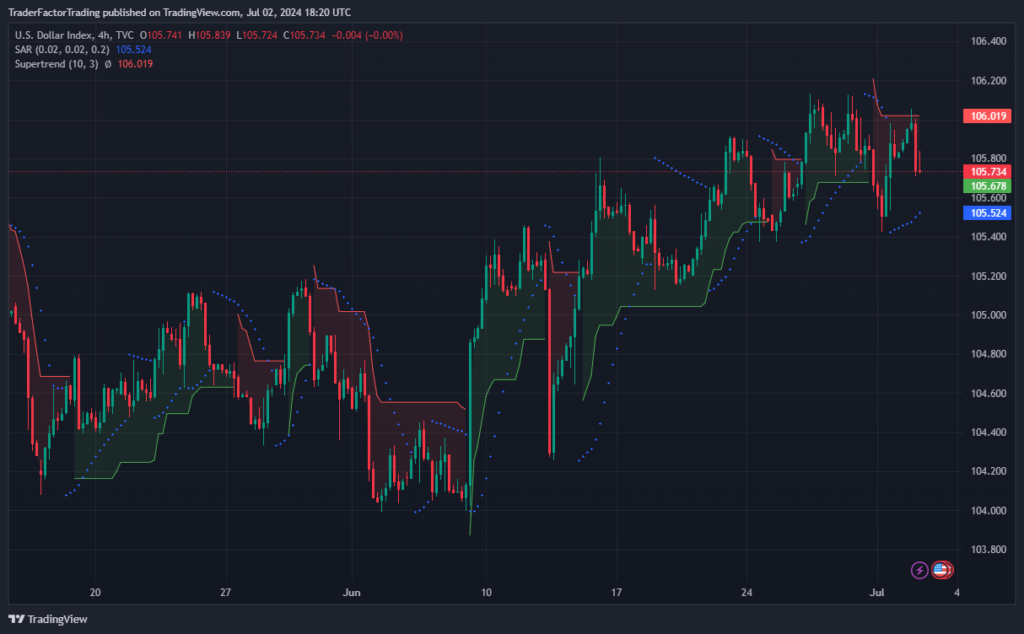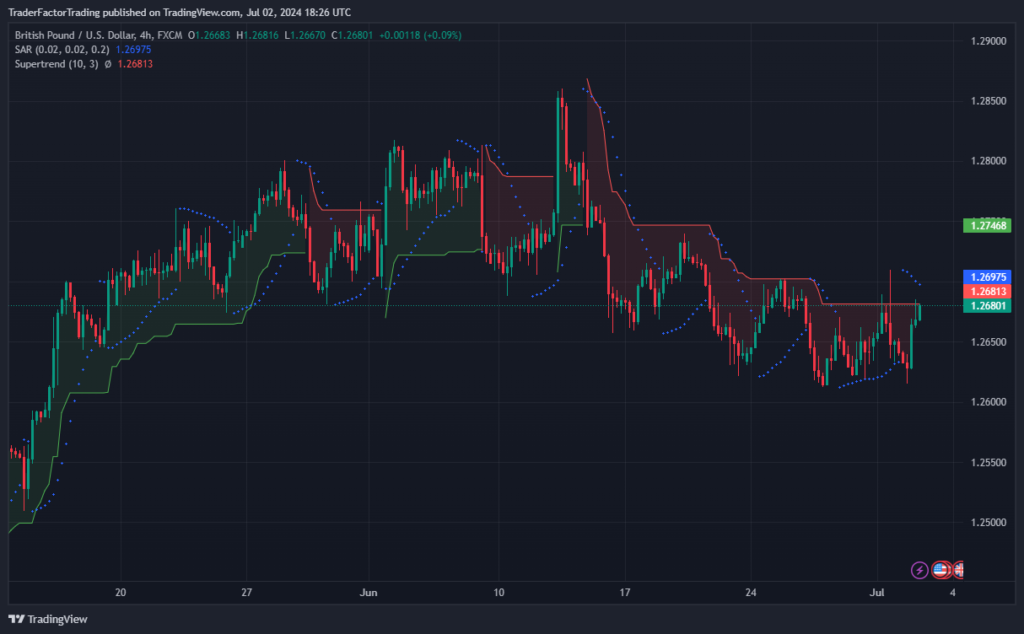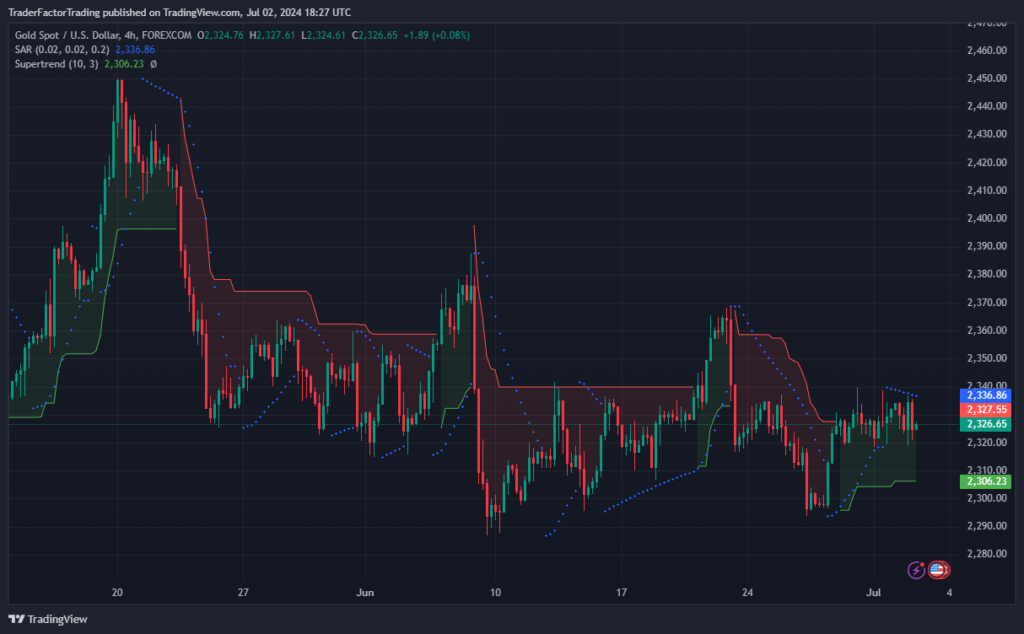The JOLTS May figures have unveiled a surprising uptick in job openings, rising to 8.14 million from a revised 7.91 million in April. This unexpected increase signals continued resilience within the labor market, defying earlier predictions of a slowdown. This data point is likely to be a significant factor in the Federal Reserve’s policy discussions. However, the Fed balances job data with other economic indicators to ensure a comprehensive approach to monetary policy.
US Dollar Hovers Near 105.70 After JOLTS
On Tuesday, the US Dollar, as indicated by the DXY Index, experienced moderated gains, hovering around the 105.70 mark. This subdued movement of the dollar is notably shaped by a surge in JOLTS figures and insightful comments from Jerome Powell regarding the inflation landscape.
DXY Dollar Index 4-hour Chart

Emerging signs of disinflation in the US have sparked market optimism about a potential rate cut in September. However, it’s essential to temper expectations, as Federal Reserve officials, including Powell, remain vigilant. They maintain a steadfast commitment to a data-driven approach, refraining from confirming any premature rate cuts.
In a surprising twist, the US labor market showcased its enduring strength in May as the number of available jobs surged unexpectedly. The Bureau of Labor Statistics’ latest Job Openings and Labor Turnover Survey (JOLTS), released on Tuesday, revealed that job openings climbed to 8.14 million, up from a downwardly revised 7.91 million in April.
Economists had anticipated a decline in openings to 7.91 million, based on FactSet consensus estimates, making this upward shift an unexpected yet positive sign for the economy.
Despite the often-volatile nature of job postings, May’s JOLTS report underscored a significant achievement for the US labor market. The ratio of job openings to unemployed individuals dropped to 1.22, mirroring the figure last seen in February 2020, just before the pandemic-induced lockdowns disrupted the global economy. This milestone suggests that the labor market is regaining its pre-pandemic footing.
This trend underscores the persistent demand for labor, even amidst economic uncertainties. The steady decline in the job openings-to-unemployed ratio from its peak of 2.0 in March 2022 highlights a gradual normalization.
EUR/USD Experiences Downside Pressure
The EUR/USD pair is grappling with downward pressure, primarily driven by a resurgence in the US Dollar following a robust JOLTS Job Openings report. On Tuesday, the EUR/USD exhibited a softer tone, retreating from its early-week high of 1.0775 and testing the 1.0730 level.
EURUSD 4-hour Chart
This decline in the Euro comes despite lackluster US economic data. The Dollar’s advance was bolstered by the ISM Manufacturing Index, which contracted to 48.5 in June from 48.7 in May, falling short of expectations for an increase to 49.1.
GBP/USD Maintains Bullish Bias
The GBP/USD pair is maintaining its bullish bias, capitalizing on the Dollar’s fluctuating price action to push higher. As of today, the pair is inching closer to the pivotal 1.2700 region, reflecting renewed investor optimism.
GBPUSD Daily Chart

Gold’s Gains Fade
Gold’s initial rally has lost its luster, with the precious metal now trading at modest losses around the $2,320 per troy ounce mark. This turnaround is primarily in response to the data-fueled resurgence of the Greenback, underscoring gold’s inherent sensitivity to currency movements.
XAUUSD 4-hour Chart

The recent uptick in the Greenback, driven by stronger-than-expected economic indicators, has exerted downward pressure on gold prices. Investors are keenly aware that gold often serves as a hedge against currency volatility, making it particularly reactive to shifts in the Dollar’s strength.
A continuous flow of robust US data could further bolster the Dollar, potentially capping gold’s upside potential. Conversely, any signs of economic softening or dovish tones from the Federal Reserve may reinvigorate gold’s appeal as a safe-haven asset.
Eurozone Inflation and ECB Outlook
The eurozone’s inflation rate has slightly decreased from 2.6% to 2.5%, with core inflation steady at 2.9%. These figures do not indicate an imminent rate cut by the ECB in July. The central bank is likely to wait for more data over the summer before seriously considering a rate cut in September.
The June inflation reading revealed sticky services inflation at 4.1% annually, maintaining elevated core inflation levels. Despite wage growth remaining high, forward-looking data suggests some easing in services inflation and wage growth. Today’s unemployment data confirmed a strong labour market, with the rate remaining at a record low of 6.4%.
Disclaimer:
All information has been prepared by TraderFactor or partners. The information does not contain a record of TraderFactor or partner’s prices or an offer of or solicitation for a transaction in any financial instrument. No representation or warranty is given as to the accuracy or completeness of this information. Any material provided does not have regard to the specific investment objective and financial situation of any person who may read it. Past performance is not a reliable indicator of future performance.

















